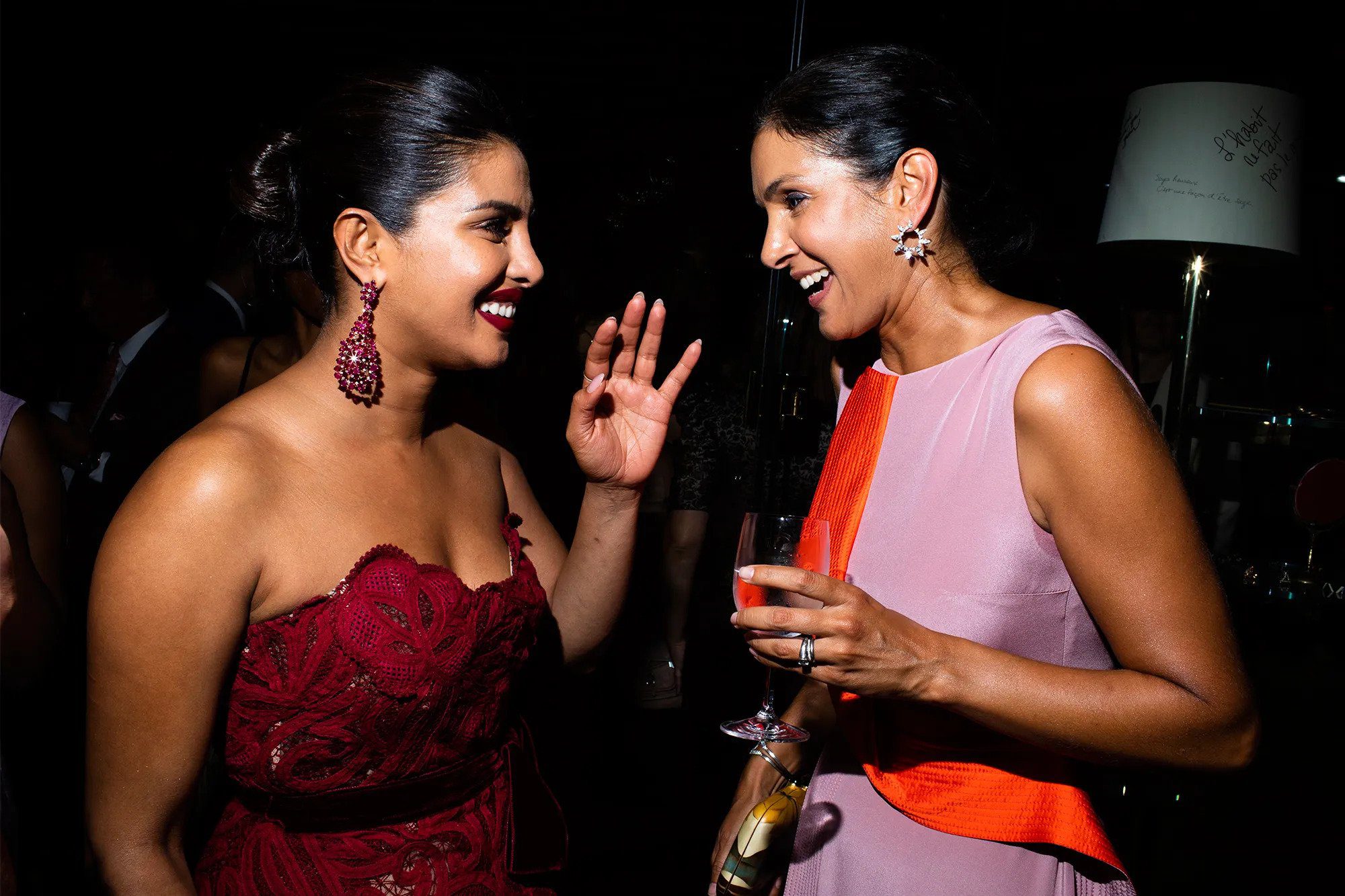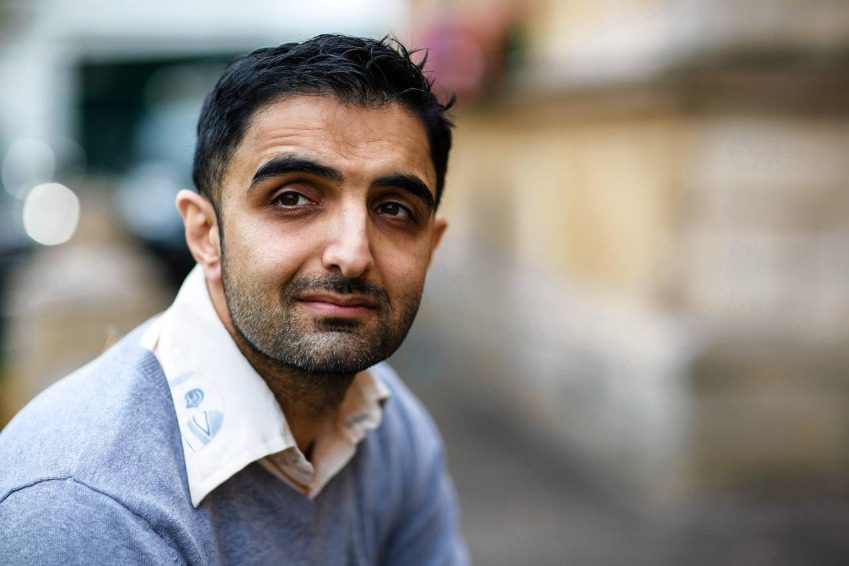(August 3, 2021; 9.30 am) It was in December 2017 that Radhika Jones took off the dusty sheets of the age-old formula that had high-octane gloss, glamor, nostalgia, and polarization at the very center of Vanity Fair. Stepping in as the editor-in-chief of Vanity Fair after Graydon Carter’s retirement and being the first woman of color to achieve that feat, the 48-year-old Harvard-graduate has proudly infused inclusivity, representation, diversity, culture, and aspiration into the world of the celebrity-society magazine.
Her first cover featuring producer-writer Lena Waithe in April 2018 issue turned out to be a game-changer and caused seismic shifts in America’s culture. By putting a Hollywood up-and-comer and a queer person of color on the cover, Jones set the ball rolling.
View this post on Instagram
In a conversation with Los Angeles Times, she said,
“What I realized when I took the helm at Vanity Fair is that I wanted to prioritize putting people on the cover who hadn’t been on the cover before.”
Inclusivity and giving a voice to events and people who needed to be heard the most became Jones’ mantra. Since then, every cover story of Vanity Fair speaks volumes about her clarity of vision and her choice to represent the unrepresented.
“It’s our mission at Vanity Fair to take the pulse of the culture – high and low. It comes with tremendous opportunity: to draw attention to the people who are on the culture’s cutting edge and whose talent and creative vision transform the way we see the world and ourselves,” read her first editor’s letter.
The success of Vanity Fair can be partially credited to her background.
From Harvard University to Time magazine
Born to American folk musician Robert L Jones and an Indian mother Marguerite Jones, Jones was raised in Connecticut around music. Her dad was a prominent figure in the American folk scene in the 50s and 60s, and she often accompanied him to music festivals. When he traveled less, she sold T-shirts and worked the box office at many events that her father helped produce.
“One thing I really learned from my father was the kind of excitement and rush of discovering new talent and keeping an open mind to new voices and bringing artists together,” she added.
View this post on Instagram
While she loved the vibe of music, it was books that attracted her the most. A bibliophile, Jones studied English Literature at Harvard University. But it was her love for storytelling that pulled her into journalism, and she began her career with the Moscow Times in the mid-90s. She moved up the ladder as she started working at Art Forum. After her tryst with Book Forum and Colors, she ended up at the Paris Review as the managing editor. In 2008, she joined Time magazine as an arts editor and moved up the ranks to the role of a deputy editor.
It was during her stint at Time that she got involved in a variety of journalism. From hard news to investigation to art criticism, Jones immersed herself deeply into the know-how of every aspect of magazine making. In 2016, she joined New York Times as the editorial director of the books department.
View this post on Instagram
The beginning of the change of an era
A year later, when Graydon Carter stepped down as the editor-in-chief of Vanity Fair, Jones made history by becoming the first Indian-American to head the magazine. However, her entry into Vanity Fair was met with surprise and suspicion because of her background in academia. It was speculated that she wouldn’t be a good fit for the role as it required networking, and someone in the public eye would be a better choice.
But in no time Jones shut her naysayers when she transformed the image of the magazine by starting a conversation with truly diversifying covers and amplifying the voices of people of color.
An ambassador of inclusivity and representation
Radhika Jones signaled her arrival at Vanity Fair with Lena Waithe cover in April 2018. For a magazine whose covers had been glossed with glamor and high-profile celebrities for many decades, this was an avant-garde moment. Jones put an Emmy winner, a queer and a woman of color on the cover because she had a story to tell.
“When I thought about the kind of person I’d like to see on the cover of Vanity Fair, I thought about Lena Waithe—a member of the new creative elite remaking entertainment for her generation,” wrote Jones in Vanity Fair.
With each passing month, Jones put across stories that mattered. She was a woman on a mission—to start a dialogue.
Only Jones could have put a portrait of Breonna Taylor, a 26-year-old African-American woman who had been brutally and wrongfully killed by the police at her apartment in March 2020, on her cover. Paying a tribute to a life that mattered and giving voice to the Black Lives Matter protest is what made Jones an editor-in-chief different from the rest.

Radhika Jones and Priyanka Chopra at Vanity Fair event. (Photo: Vanity Fair)
In 2020 with the Black Lives Matter campaign in full swing, Vanity Fair created history when it hit the stalls with a powerful image of Oscar-winning actor Viola Davis shot by photographer Dario Calmese, making him the first black photographer to shoot a front cover for the magazine. In the same issue, Jones revealed that only 17 black people made it to the cover of Vanity Fair between 1983 and 2017, and she was determined to change that.
She went on to publish 11 solo covers featuring black people in the last three years and also started a dialogue around important events: Jones has signaled the beginning of a new era.
Radhika Jones has become a visionary and champion of talent and cause, and Lena Waithe’s tribute is a testimony to it. “Radhika, Today, I honour you. For the contributions, you’ve made to entertainment and the world. By putting someone who looks like me on the cover of Vanity Fair you said to the world: Women like me matter. Black women matter. Gay black women matter. Masculine-presenting black women matter. A girl raised by a single mother on the South Side of Chicago matters. Thank you for forcing the world to hold my gaze.”
Editor’s Take
Replacing Graydon Carter as editor-in-chief of Vanity Fair and being the first woman of color to do so is an admirable feat in Jones’ career. The 48-year-old has turned out to be a game-changer for a magazine that was dipped in the hues of glamor, gloss and fashion for time immemorial. Her idea of representation and inclusivity has set her apart from the others and she is taking on the world with each cover at a time.
Read a similar story of Priti Krishtel, an Indian-American lawyer fighting against racism.



